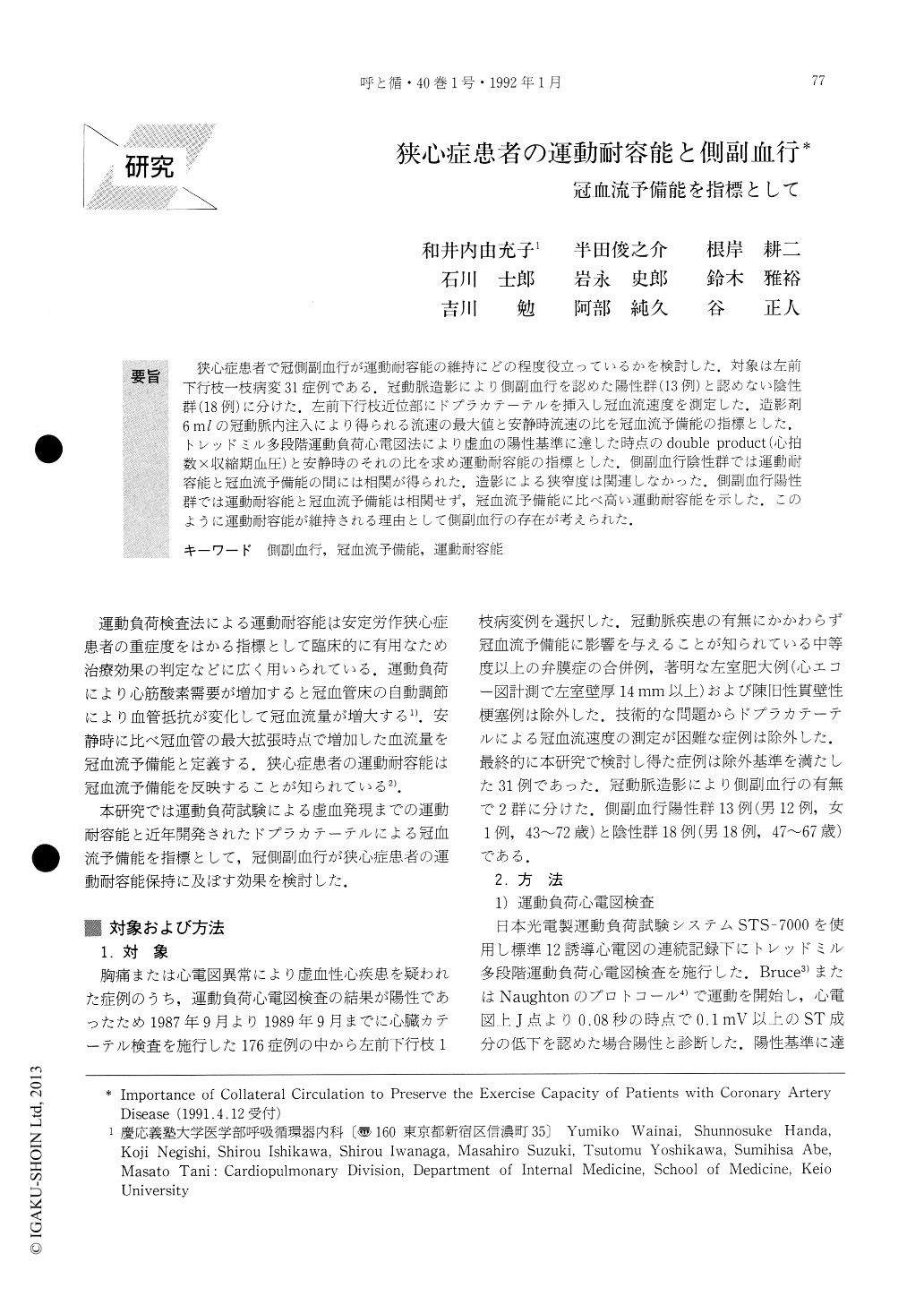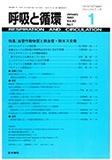Japanese
English
- 有料閲覧
- Abstract 文献概要
- 1ページ目 Look Inside
狭心症患者で冠側副血行が運動耐容能の維持にどの程度役立っているかを検討した.対象は左前下行枝一枝病変31症例である.冠動脈造影により側副血行を認めた陽性群(13例)と認めない陰性群(18例)に分けた.左前下行枝近位部にドプラカテーテルを挿入し冠血流速度を測定した.造影剤6mlの冠動脈内注入により得られる流速の最大値と安静時流速の比を冠血流予備能の指標とした.トレッドミル多段階運動負荷心電図法により虚血の陽性基準に達した時点のdouble product(心拍数×収縮期血圧)と安静時のそれの比を求め運動耐容能の指標とした.側副血行陰性群では運動耐容能と冠血流予備能の間には相関が得られた.造影による狭窄度は関連しなかった.側副血行陽性群では運動耐容能と冠血流予備能は相関せず,冠血流予備能に比べ高い運動耐容能を示した.このように運動耐容能が維持される理由として側副血行の存在が考えられた.
We studied the effects of coronary collaterals on exercise capacity in relation with the coronary flow reserve. Thirty-one patients with single vessel disease of the left anterior descending artery (LAD) were selected using coronary angiography. Thirteen of them had angiographical collaterals. A Doppler coronary catheter was positioned in the proximal portion of the LAD, and the resting and peak coronary flow velocity was measured using an intracoronary injection of 6 ml of contrast material. Peak to resting velocity ratio was calculated as an index of the coronary flow reserve.

Copyright © 1992, Igaku-Shoin Ltd. All rights reserved.


